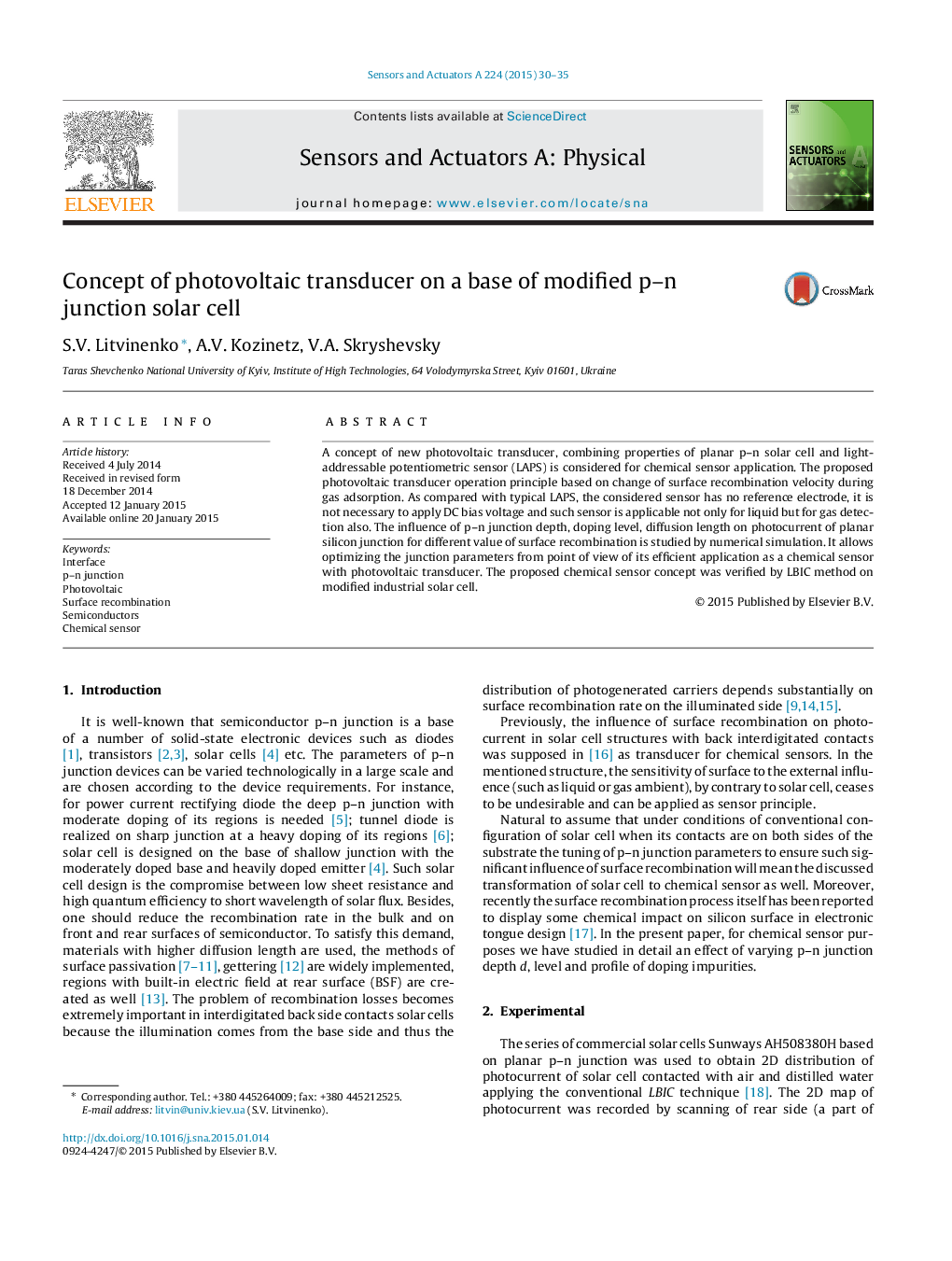| Article ID | Journal | Published Year | Pages | File Type |
|---|---|---|---|---|
| 736880 | Sensors and Actuators A: Physical | 2015 | 6 Pages |
•The possibility of silicon p–n junction functional transformation from solar cell to the base structure for sensors is discussed.•The optimal parameters of sensor with photovoltaic transducer, based on “deep” silicon p–n junction, are justified by numerical simulation to create effective sensor structures.•In particular, it is shown that optimum depth of planar p–n junctions should exceed the diffusion length and it is preferable to choose the uniform doping profile.•In the considered sensor the signal is determined by change of surface recombination velocity at a contact with analyte, therefore the obtained data complement the information from other transducer approaches such as LAPS.•Moreover, such sensors are applicable not only for electrolyte but also for gas control.
A concept of new photovoltaic transducer, combining properties of planar p–n solar cell and light-addressable potentiometric sensor (LAPS) is considered for chemical sensor application. The proposed photovoltaic transducer operation principle based on change of surface recombination velocity during gas adsorption. As compared with typical LAPS, the considered sensor has no reference electrode, it is not necessary to apply DC bias voltage and such sensor is applicable not only for liquid but for gas detection also. The influence of p–n junction depth, doping level, diffusion length on photocurrent of planar silicon junction for different value of surface recombination is studied by numerical simulation. It allows optimizing the junction parameters from point of view of its efficient application as a chemical sensor with photovoltaic transducer. The proposed chemical sensor concept was verified by LBIC method on modified industrial solar cell.
